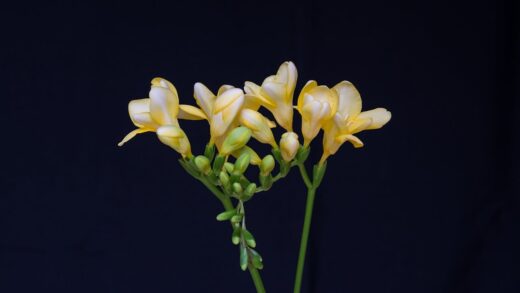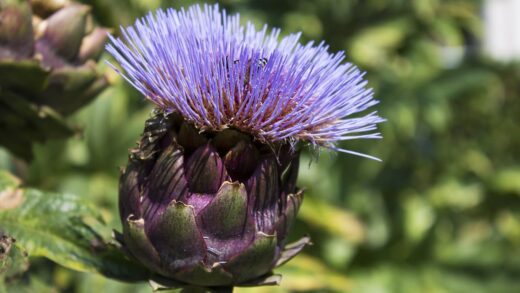The topic of pruning and cutting back the persian onion is one that often causes confusion among gardeners, yet the principles are quite straightforward and are rooted in understanding the plant’s natural life cycle. Unlike many garden shrubs or perennials that benefit from regular trimming to maintain their shape or encourage more flowers, the persian onion has very specific and limited needs when it comes to cutting. The primary focus of any cutting is to support the long-term health and energy storage of the bulb. Improper or ill-timed cutting can be detrimental, significantly reducing the plant’s vigour and its ability to produce the spectacular blooms it is known for. Therefore, knowing what to cut, when to cut it, and most importantly, what to leave alone, is essential for its successful cultivation.
The most critical rule to understand is that the foliage of the persian onion should never be cut back while it is still green. The broad, strap-like leaves that emerge in the spring are the plant’s engine. They are responsible for photosynthesis, the process of converting sunlight into the energy that fuels the growth of the flower stalk and the development of the magnificent bloom. After the flowering period is over, the leaves continue this vital work, but now their purpose is to send all the energy they produce back down into the bulb. This process is what “recharges” the bulb, allowing it to store enough food to survive dormancy and produce a flower in the following year.
It is a common temptation for gardeners to want to tidy up the plant as the leaves begin to yellow and flop, which often happens just as the flowers are reaching their peak. However, cutting off the leaves at this stage would be a critical mistake. It would effectively starve the bulb of the energy it needs for the future, leading to a much weaker plant and a significantly diminished or even non-existent floral display in the next season. You must exercise patience and allow the foliage to wither and turn completely brown or yellow on its own. Only when the leaves are fully desiccated have they completed their work, at which point they can be easily and safely pulled away from the base of the plant.
Some gardeners try to get around the untidy appearance of the dying foliage by braiding or tying the leaves together. This practice is also not recommended. While it may look neater, folding and creasing the leaves in this way can damage the plant’s vascular tissues, which are the channels through which water and nutrients are transported. This can impede the flow of energy from the leaves back down to the bulb, defeating the purpose of leaving them on the plant in the first place. The best approach is to simply accept the natural decline of the foliage as part of the plant’s cycle or to cleverly disguise it with companion plants.
Deadheading the flower stalks
Once the vibrant purple flower head of the persian onion has finished its display and begins to fade, you have a choice to make regarding the flower stalk, or scape. The practice of removing spent flowers is known as deadheading. For the persian onion, deadheading can be beneficial if your primary goal is to maximize the energy stored in the bulb for the following year’s bloom. If left on the plant, the faded flower will begin the process of producing seeds. This process requires a significant amount of the plant’s energy, energy that could otherwise be directed back into strengthening the bulb.
To deadhead the plant, simply use a clean, sharp pair of secateurs or garden shears to cut the flower stalk off at the base, as close to the rosette of leaves as possible. This should be done as the individual florets on the globe begin to shrivel and lose their colour. By removing the stalk, you prevent the plant from wasting its resources on seed production and ensure that all the energy captured by the still-active leaves is channeled directly into building up the bulb’s reserves. This can contribute to a larger and more robust flower display in the subsequent season.
However, there is also a strong aesthetic argument for not deadheading your persian onions. The spent seed heads have a remarkable structural beauty of their own. As they dry, they transform into attractive, architectural globes that can provide visual interest in the garden border long after their colour has faded. They look particularly stunning in the autumn and winter, when their skeletal forms can catch the frost and provide a striking silhouette. Many gardeners choose to leave the seed heads in place for this very reason, sacrificing a small amount of energy for a prolonged season of ornamental appeal.
Ultimately, the decision to deadhead or not is a personal one, based on your gardening priorities. If your main objective is to cultivate the largest and most vigorous blooms possible, then deadheading is the recommended course of action. If you appreciate the year-round structural interest that the dried seed heads provide and are happy with the excellent performance the plant gives anyway, then leaving them in place is a perfectly valid and popular choice. You could even compromise by deadheading some stalks and leaving others for visual interest.
Pruning for propagation
While the persian onion is not pruned in the traditional sense, some cutting is involved in the process of propagation by division. This is the most common method of creating new plants from an established clump. Over several years, a single bulb will multiply underground, forming a dense cluster. This can eventually lead to overcrowding, which results in increased competition for light, water, and nutrients, and can cause a decline in the size and number of flowers. Dividing the clump every three to four years can rejuvenate the planting and provide you with new bulbs to expand your display.
The process of division is best carried out in late summer or early autumn when the plant is fully dormant and the foliage has completely died back. After carefully lifting the entire clump with a garden fork, you may find that the old, dried flower stalks and leaves are still attached to the bulbs. Before you separate the individual bulbs, it is helpful to prune away this dead top growth. You can cut the old stalks and withered leaves right back to the top of the bulb. This makes the clump easier to handle and allows you to see the individual bulbs more clearly.
Once the dead top growth has been trimmed away, you can proceed to gently separate the clustered bulbs by hand. After division, the bulbs are ready for immediate replanting. There is no further pruning or cutting required. The bulbs should be planted at the correct depth, and they will begin to produce new roots in the autumn and new top growth in the spring. This periodic division and the associated trimming of old, dead material is a key part of the long-term maintenance and “pruning” strategy for a healthy clump of persian onions.
It is important to note that this is the only time when significant cutting of the plant is recommended. All other pruning should be limited to the removal of the spent flower stalk, as discussed previously. Any cutting of the green, growing foliage will be detrimental to the health of the bulb. This simple principle is the key to successfully managing the growth and vitality of your persian onions.
Using the flowers and stems
The magnificent flowers of the persian onion are not just for garden enjoyment; they also make spectacular and long-lasting cut flowers for indoor arrangements. If you wish to cut the flowers for a vase, the best time to do so is when the individual florets on the globe are just beginning to open. You will notice that the globe is covered in a thin, papery sheath called a spathe. The flower is ready to be cut when this spathe has split open and the colour of the florets is clearly visible, but before all the florets have fully opened. Cutting at this stage will ensure the longest possible vase life.
Use a sharp, clean knife or secateurs to cut the stem at its base. It is best to do this in the cool of the morning. Immediately after cutting, place the stems into a bucket of clean water. Before arranging them, you can re-cut the base of the stems at an angle, which increases the surface area for water uptake. The flowers have a very long vase life, often lasting for two weeks or more. It is worth noting that, like all alliums, the cut stems may release a faint oniony scent when first cut, but this usually dissipates quickly once they are in the vase.
Removing the flower for a vase has the same effect on the plant as deadheading. It prevents the plant from setting seed and directs its energy back into the bulb. Therefore, you can enjoy the beauty of the flowers indoors without compromising the health of your plant for the following year. As with any pruning, remember to leave the foliage in the garden to die back naturally. Never cut the leaves to add to the flower arrangement, as this will damage the plant.
The dried seed heads can also be used in dried flower arrangements. To do this, simply leave the flower stalks on the plant until the seed head is fully formed and has dried to a tan or brown colour. Then, cut the stalks at the base and they can be used immediately in arrangements or stored in a dry place for future use. Some people also like to spray paint the dried heads in metallic colours like silver or gold for use in festive holiday decorations, adding to their year-round versatility.
Tidying up at the end of the season
The final act of cutting back for the persian onion comes at the very end of its annual cycle. After the plant has flowered, and you have allowed the foliage to completely wither and turn brown, it is time for the final tidy-up. This is usually in mid to late summer, depending on your climate. At this point, the leaves have given all their energy back to the bulb and are no longer serving any purpose. They can now be safely removed without causing any harm to the plant.
You can either gently pull the dried leaves away, and they should detach easily from the base, or you can cut them back to the ground level with a pair of secateurs. If you chose not to deadhead earlier in the season and have left the dried seed heads for winter interest, you can simply remove the dead foliage from around the base of the still-standing stalks. This simple act of sanitation helps to make the garden bed look neater and also removes any material that could potentially harbor pests or diseases over the winter.
If you are leaving the dried flower stalks in place for winter interest, they can be left standing until they are either damaged by winter weather or until you are doing your main garden clean-up in the late winter or very early spring. At that time, before the new growth begins to emerge, you can cut the old, brittle stalks down to the ground. This clears the way for the new season’s shoots to come through unimpeded.
This end-of-season clean-up is the final step in the annual pruning and cutting cycle for the persian onion. It is a simple process that, when done at the right times, supports the plant’s health and ensures a vigorous return the following spring. The key is to always work with the plant’s natural rhythm, allowing it to complete its energy-gathering cycle before any significant cutting takes place. This patient approach is the hallmark of successful allium cultivation.

















